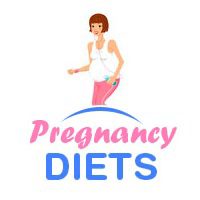Unlike most diets, your pregnancy diet does not leave room for personal choice or preference. Your growing baby needs some specific vitamins and minerals, which means eating a lot of green leafy vegetables and lean red meat. This is sometimes difficult for vegetarians and women who don’t usually eat this way. However, you can’t be selfish about this, you’ve got someone else more important than yourself to think about now. Quite often women will adopt a different diet during their pregnancy, and first year if you breast feed, and then revert back to their old ways later on.
First Trimester
It’s not simply a case of ‘eating for two’ and just eating more. In fact, during your pregnancy you should aim to only put on an extra 20-
During your first trimester, which is the basically the first 3 months, you shouldn’t increase your portion sizes at all. In terms of your pregnancy diet, at this stage it’s more a case of changing what foods you eat rather than how much you eat.
During the first trimester a healthy weight gain is a mere 3lbs. Anymore than that and you’re just making it harder for yourself later on. Only in the last 6 months should you aim to put on weight. This is at the rate of about 4-
Pregnancy Diet Chart
It’s advisable to keep a weight chart so you can monitor your progression throughout the pregnancy. Stick to the guidelines mentioned above and you should be fine.
Remember that if you restrict your pregnancy diet too much and don’t put enough weight on, you risk the chance of your baby having a low birth weight. Low birthweight babies have an elevated probability for serious health conditions as newborns, long lasting handicaps and in some cases death.
The ones that survive have a higher than normal tendency for mental retardation, learning disabilities, cerebral palsy as well as sight and loss of hearing.
On the other hand, if you’re too overzealous with your pregnancy diet and put on too much weight you’ll put your child at more risk of developing spina bifida, cardiovascular defects, a cleft palate as well as shorter limbs. It’s best to play it safe and keep a pregnancy diet weight chart.
Pregnancy Diet Checklist
On top of your pregnancy diet weight chart it’s also important to keep a pregnancy diet checklist handy for the essential vitamins and minerals to make sure your baby develops in the best possible environment.
Three of the main ones to keep on top of are folate, calcium and iron.
Folate, or folic acid, is important for your baby’s growth and development and it’s actually recommended that you take it while you’re trying to get pregnant and also during the first trimester.
Things to keep on your pregnancy diet checklist include chickpeas, kidney beans and yeast extract spreads such as marmite and vegemite for folate.
Spinach is a pregnancy diet superfood packed with calcium, folic acid and iron, whilst lean red meat is the still your best source of natural iron because it’s in the exact correct proportions. If you really can’t take red meat try to find a high quality supplement for iron.
Dairy products are your best choice for calcium, but alternatives are nuts and seeds such as brazil nuts and almonds can also be good. However, if you’re a vegan be aware that nuts and seeds will not provide you with a sufficient amount of calcium for your baby’s growth, no matter how much you consume.
